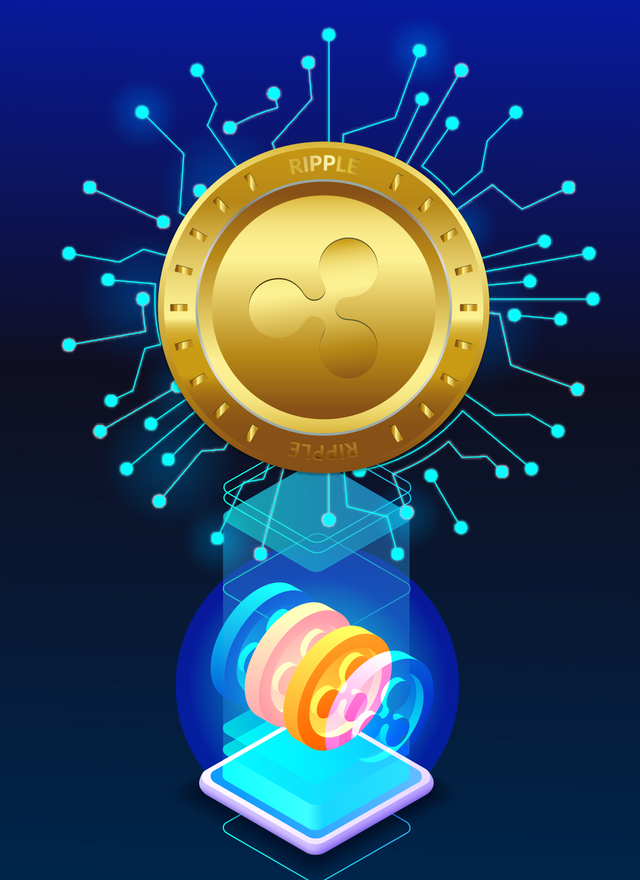Ripple and the Money Remittance Industry

Did you know that most financial institutions are still making use of technologies that were developed back in the 1970s to handle payments even in the age of instantaneous connectivity? The cross-border money remittance sector is a $155 trillion market. Presently, banks and other payment processors take several days to process payments amid high fees charged for the transactions.
This implies that global trade and cross-border consumer behavior has remained almost the same over the years and has failed to advance just like technology. A significant reduction in the fees, as well as processing times for such transactions, would undoubtedly lead to an explosion in globalization as well as cross-border collaboration.
Most cryptocurrencies such as Bitcoin and Litecoin were mainly created to serve as digital money. However, Ripple was created to serve as a solution to the major challenges that people face when transferring funds from one country to another.
Ripple serves as a platform for a global system of payments, settlements and exchange. Launched by Ripple Labs Inc. back in 2012, the platform leverages the power of blockchain technology to ensure that people send money to any location easily and cheaply.
The idea behind Ripple is some kind of reimagination of the way we send money even before the creation of banks. In those days, an agent would be required for anyone who desires to send money from one city to another. So, when you inform an agent that you want to send money to your friend in another city, the agent would contact another agent in your friend’s location and once your friend provides the password, then the second agent would release the money. Well, for agents to make payments on behalf of other agents, they would all trust each other.
This is how Ripple works — connecting various payment agents to execute cross border payments. What the Ripple algorithm does is to discover a trusted path for all transactions. Agents on the Ripple network are known as “gateways,” and they are mostly banks or other companies that accept deposits to transfer money.
What Ripple wants to achieve is to ensure that money moves with the same speed and ease as information currently does in this digital age. This means that they are making cross border payments cheaper and faster in different currencies that people use every day. The Ripple network wants to upgrade the existing infrastructure in the banking system to achieve its goal of cheaper and faster transactions for the average user.
The truth is that the Ripple system is not restricted to cash only. Theoretically, the trusted agents or gateways can actually work with anything. A gateway could give a car, gold and even beer to a recipient as long as it is equipped to transact in such assets. What makes Ripple unique is its ability to transact anything of value, especially several currencies at a time.
Ripple is a platform that was developed by Ripple Labs and the native currency that is being used in the network as a transaction fee is XRP. The major focus of Ripple is on the provision of real-time payment settlements in addition to providing currency exchange services to banks and other financial institutions.
Did you know that over 100 companies have already embraced Ripple software worldwide to provide transactions that are fast and without frictions? This is one of the reasons why XRP has remained among the top five most valuable digital currencies based on market cap. You can check this out on CoinMarketCap
While most cryptocurrencies have a decentralized network of miners who help to secure the network, Ripple secures its platform by making use of a network of validating servers. The transactions on the Ripple network are not only limited to XRP. The network actually supports fiat money such as British pounds, US dollars, euro and yen.
So, here is a summary of the things Ripple is used for:
With Ripple, the average transaction time is about 4 seconds. When compared to the transaction time of cryptocurrencies such as Bitcoin, then it’s a lot faster. It’s even faster than the regular banking systems that require a few days to complete international transactions.
The commission on currency exchange is quite low. Banks are always required to use US dollars as a mediator since many currencies cannot be directly converted to each other. This leads to the issue of double commission — converting the first currency to US dollars and then converting the Us dollars to another currency. Ripple is working toward becoming a cheaper mediator than the US dollars.
Some of the banks that are currently supporting Ripple include:
Union Credit
Santander
NBAD
Axis Bank
Westpac
UBS
Euro Exim Bank
SendFriend
SBI Holdings
MoneyGram
Cambridge FX
Western Union
Viamericas
You can purchase Ripple in most of the big exchanges such as Binance, Bittrex, Kraken and several others. The major challenge that Ripple has is the issue of centralization and efforts are being made to decentralize the platform. Find out more about Ripple as well as other digital currencies by reading “The Digital World of Crypto Riches.” You will discover some of the top-performing cryptocurrency projects that have the potential for profits, available on Amazon:
https://read.amazon.com/kp/embed?asin=B08MZ37PF4&preview=newtab&linkCode=kpe&ref_=cm_sw_r_kb_dp_V7K447G4H8VQRJBW445W
